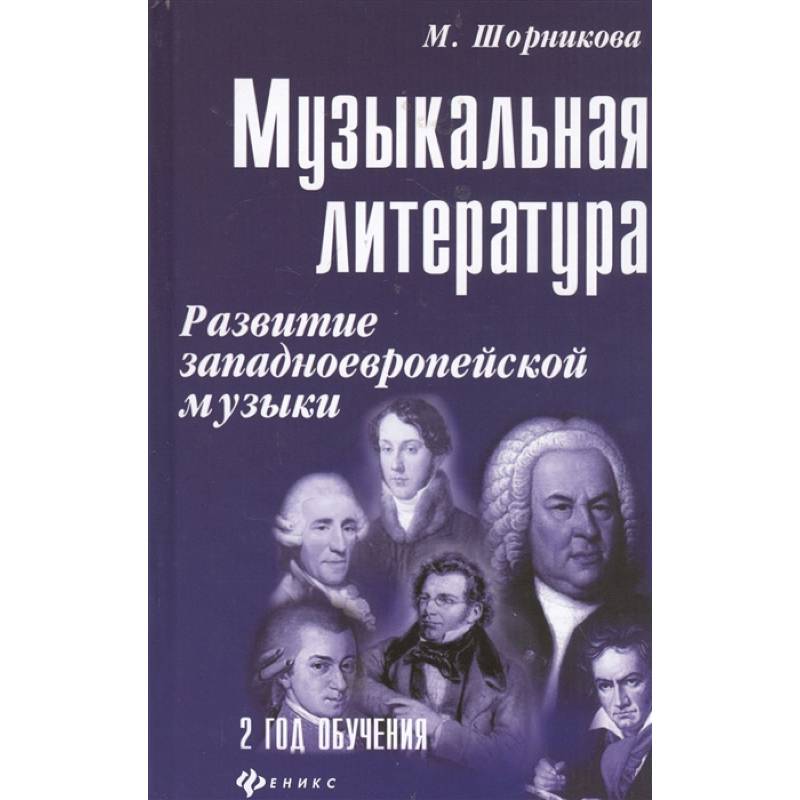Musical literature. Development of Western European music. The second year of training
Please sign in so that we can notify you about a reply
The appearance of this textbook is due to the fact that the traditional program for musical literature for the Children"s School was published in 1956 and, without changing efficiently, then withstood several reprints (1962, 1970, 1979, 1982) Naturally, many attitudes and thematic plans for a typical program are outdated and do not meet the requirements of new approaches and methods of musical education of children.
In recent years, other models of the program, curricula that adapt the content of the course to the new historical and sociocultural conditions began to appear, to the new trends of the comprehensive aesthetic education of children. This textbook is based on many years of experience in teaching the subject “Musical Literature” in the Children"s School, set forth in the copyright programs and methodological recommendations of E. Lisyanskaya, Yu. Ageeva, A. Khotuntsov, M. Kuklinskaya, etc.
This manual is built on the alternation of monographic topics in accordance with the historical and artistic process. This allows you to identify not only the characteristic features of individual works, but also the features of the style of great composers, to establish the relationship between the phenomena of musical creativity. The adapted nature of the manual made it possible to add overview topics on European culture of the second half of the 19th century: composers-romantics F. Liszt, R. Shuman, E. Grieg, opera XIX century, impressionism. The genre variety of works contributes to the expansion and deepening of previously acquired knowledge.
Understanding that one of the tasks of the subject should be considered the preparation of active listeners and lovers of music, we included a large amount of introductory material addressed to the broad masses of the children"s audience in the manual. Hence - the heading passing through all four manuals “Say that ...”, some materials of which are borrowed from the collection “Funny Anthrak: curious stories from the life of musicians” (component I. Artemchuk, 1989) and other popular music publications
In recent years, other models of the program, curricula that adapt the content of the course to the new historical and sociocultural conditions began to appear, to the new trends of the comprehensive aesthetic education of children. This textbook is based on many years of experience in teaching the subject “Musical Literature” in the Children"s School, set forth in the copyright programs and methodological recommendations of E. Lisyanskaya, Yu. Ageeva, A. Khotuntsov, M. Kuklinskaya, etc.
This manual is built on the alternation of monographic topics in accordance with the historical and artistic process. This allows you to identify not only the characteristic features of individual works, but also the features of the style of great composers, to establish the relationship between the phenomena of musical creativity. The adapted nature of the manual made it possible to add overview topics on European culture of the second half of the 19th century: composers-romantics F. Liszt, R. Shuman, E. Grieg, opera XIX century, impressionism. The genre variety of works contributes to the expansion and deepening of previously acquired knowledge.
Understanding that one of the tasks of the subject should be considered the preparation of active listeners and lovers of music, we included a large amount of introductory material addressed to the broad masses of the children"s audience in the manual. Hence - the heading passing through all four manuals “Say that ...”, some materials of which are borrowed from the collection “Funny Anthrak: curious stories from the life of musicians” (component I. Artemchuk, 1989) and other popular music publications
Cover:
Cover:Hard
Category:
- Category:Arts & Photography
Publication language:
Publication Language:Russian
Paper:
Paper:offset
Age restrictions:
Age restrictions:6+
ISBN:
ISBN:978-5-22-36192-4
No reviews found
